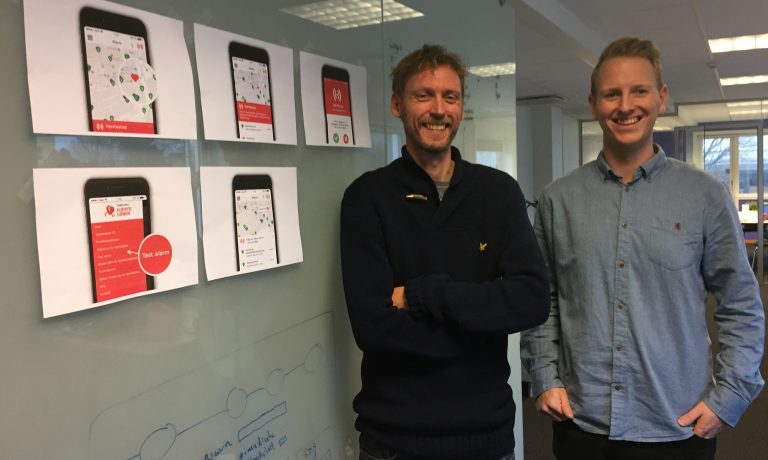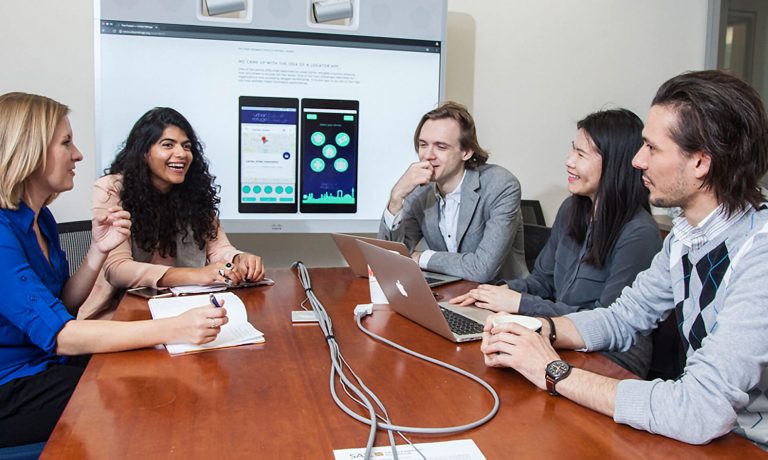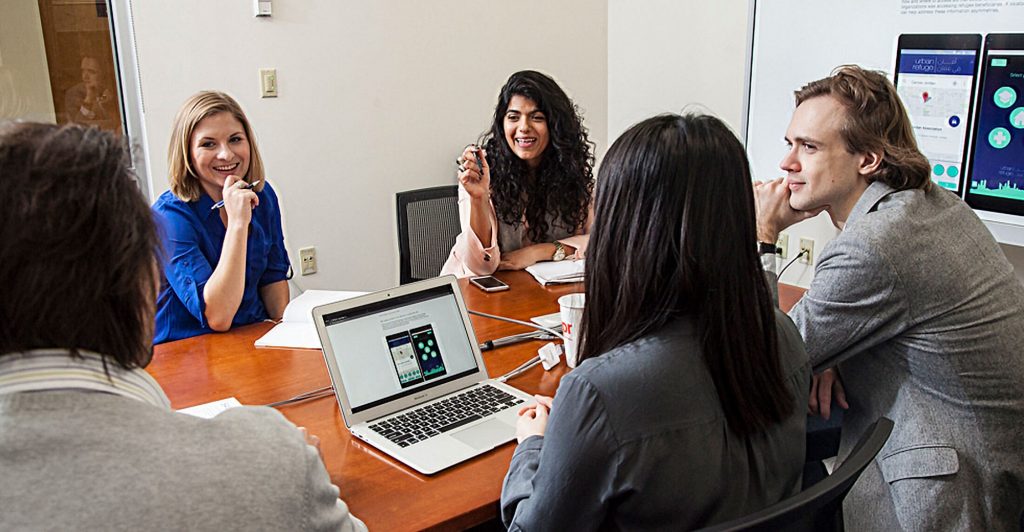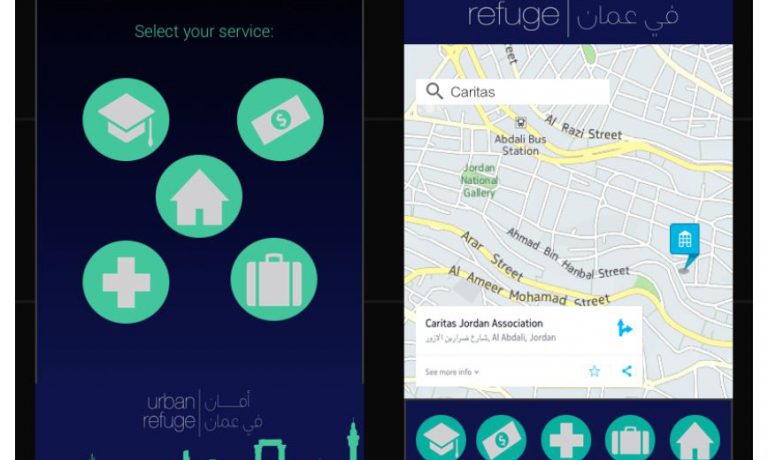From refugee aid to CPR: Changing lives with mobile apps powered by Microsoft technology
Mile Pettersson was in his office in Gothenberg, Sweden, when his cell phone alerted him that someone was in cardiac arrest nearby and needed help. A former firefighter, Pettersson jumped in his car, drove 2 miles to a crowded shopping area and found an older man on the ground, surrounded by people who didn’t know what to do. He quickly performed CPR until an ambulance arrived about 10 minutes later.
The man survived, thanks to Pettersson, medics and Heartrunner, a mobile app that alerts CPR-trained volunteers of nearby cardiac-arrest victims and shows the closest automated external defibrillators. Available in three regions – two in Sweden, one in Denmark – Heartrunner has over 50,000 trained and registered volunteers and increases the rate of bystander CPR, a significant factor in survival rates.
“An ambulance can take 10 to 20 minutes [to arrive], so someone coming in 2 to 5 minutes means a bigger chance to survive. This is why I do it,” says Pettersson, who retired from a 30-year firefighting career and now teaches construction safety.
Heartrunner is among a growing number of innovative, mission-driven, mobile apps that are changing lives and solving global problems with the help of Microsoft developer tools and cloud services. They include Visual Studio Tools for Xamarin, which enable developers to build native iOS, Android and Windows apps from a shared codebase and Visual Studio App Center, which can automate an entire app lifecycle, helping developers ship powerful apps faster.
Organizations of all sizes and industries use Microsoft technology to efficiently build, test, monitor and update their apps, but for nonprofits and small teams focused on social good, the benefits are compounded. The technologies help them save time, reach many people, build quality apps and focus limited resources on helping others – instead of managing multiple codebases or spending cycles on manual work.
Tragedy inspired a new idea to save lives

The inspiration for Heartrunner began in 2007, when a cardiologist’s morning bus commute stalled in traffic. He later learned the reason for the delay: A woman had suffered a cardiac arrest at a bus stop and died.
“He was thinking you can order a pizza and find the closest laundromat with a cell phone. But why couldn’t anyone match his life-saving skills with her need for help, when he was so close?” says David Fredman, operations manager of Heartrunner Sweden, which owns and distributes Heartrunner. The app was built by Norwegian company UMS, a firm specializing in citizen alerts in various cities and industries.
Researchers at Sweden’s prestigious Karolinska Institutet studied the cardiologist’s idea, finding that phone alerts, triggered by emergency dispatch calls, drove a 30 percent increase in citizen bystander CPR in cardiac arrest cases. Their study was published in 2015 in the New England Journal of Medicine.
The same year, UMS rebuilt the app for Android and iOS with Xamarin.Forms, which enabled the first-time mobile developers to share 80 percent of code across platforms and release the apps in just six months. Quality is critical to UMS, and the three-member Heartrunner team relies on automation, including continuous, automated builds and UI testing with Visual Studio App Center. That helps the team reach more volunteers and people in need, and meet users’ expectations for how the apps should look, feel and behave.
Heartrunner Sweden, which wants to make emergency care as on-demand as hailing a ride, has dispatched 12,000 CPR-trained volunteers in thousands of cardiac-arrest cases – an early-intervention movement that’s saving lives.
“We get feedback from people who have been saved because of our app,” says Eirik Lie, Heartrunner’s lead application architect. “It’s a good feeling.”
Helping urban refugees find aid

A continent away in Boston, the desire to make a difference also drives the all-volunteer team Urban Refuge, whose aid locator apps help urban refugees find humanitarian resources in Amman, Jordan. The team grew out of a Boston University class on forced migration that covered Jordan’s 2.7 million refugees and included an assignment to create a practical, digital solution to help people.
Students focused on urban refugees – refugees who don’t live in a camp – who often struggle to find essential services like housing, job placement and cash assistance, relying only on word of mouth.
The class developed a solution for smartphones, something most refugees in Jordan have readily accessible. Students partnered with Microsoft technical evangelists to create a mobile experience that makes it fast and easy to search for aid by category, see a map of geotagged service providers and get directions to aid offices.
As a nonprofit with limited funds and resources, Urban Refuge needs to be prepared to scale, while getting the most out of every moment. Xamarin.Forms helped the small team maximize its development resources and time, share code across platforms to deliver on Android and iOS apps, and ensure content was localized in Arabic and English. Team members have curated a database of nearly 200 Amman-based aid organizations and are in a second round of beta-testing, automatically distributing new builds to on-the-ground testers with Visual Studio Team Services and HockeyApp, now part of Visual Studio App Service.
“Most of the students have graduated and have demanding, full-time jobs, but none of us are stopping,” says the class’ teacher, Noora Lori, an assistant professor at the Pardee School of Global Studies at Boston University. “The ultimate goal is helping people.”
For Michelle Abou-Raad, Urban Refuge’s director of operations and a former student, the work is about ensuring that the class project will make a difference and benefit those in need. She has traveled twice to Jordan for research, where she met refugee women who inspired her and the entire Urban Refuge team.
“Despite their struggles, they’re trying to make ends meet and support their families,” she says. “I want to keep my promise that I will have an impact on them in some way.”
Supporting charities and personal causes
Technology also plays a central role in the mission of London-based JustGiving, whose social-giving platform drives donations for thousands of charities around the world. More than 23 million people have used JustGiving to raise $4.5 billion in donations since its founding in 2001, by creating and sharing pages for causes ranging from fundraising for cancer research to crowdfunding aid for recent bombing victims in Manchester, England.
“The vision of the founders was to make sure no good cause in the world goes unfunded,” says Mark Gibaud, lead developer of mobile apps for JustGiving.
With Microsoft technology, including Visual Studio Tools for Xamarin and Visual Studio App Center’s Test service, the team shipped its iOS app, followed by an Android version, built by a single developer in a mere three months. Sharing code across platforms streamlines any app updates and automated testing means faster deployment, better apps and more giving.

“Great app, spun up my page yesterday, shared on Facebook, Messenger and WhatsApp and emailed link to my dinosaur friends,” an iOS customer recently wrote in a review. “Already got 10 percent of my target in less than 24 hours.”
Gibaud says the review is typical, with fundraisers who use JustGiving’s mobile apps raising 10 percent more money than fundraisers who use the company’s desktop and mobile web platforms. The apps provide a richer engagement and moments of delight, including the sound of a coin clanking in a jar when someone donates. That triggers a reinforcement loop of fundraisers sharing pages more often, which leads to more donations.
As a testament to the team’s success, Blackbaud – a U.S.-based software company that serves nonprofits around the world – recently acquired JustGiving. The success also motivates JustGiving to want to achieve more.
“We’re fully aware that apps are the future,” Gibaud says. “There’s so much potential for a richer exchange with your user base that we’re in a rush to explore it more.”
Top image: Urban Refuge Jordan liaison Vicky Kelberer, left, and assistant professor Noora Lori, center, work with members of Boston University’s Software & Application Innovation Lab, including director Andrei Lapets, right. Photo by Erika Sidor.









